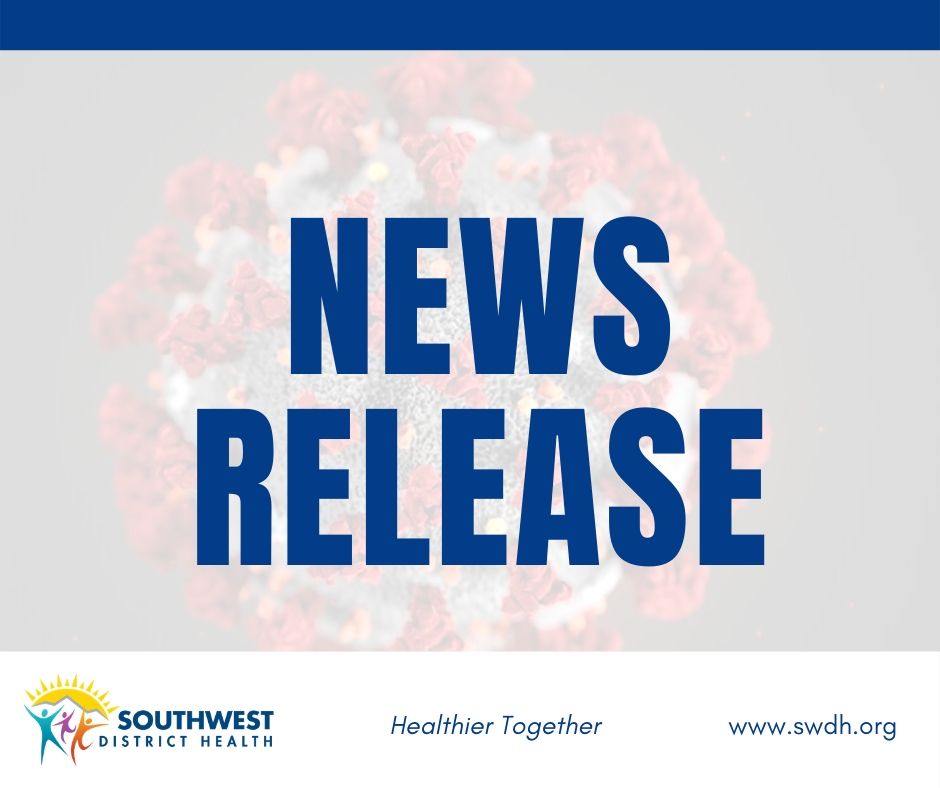Measles reported in Idaho resident; public health officials remind Idahoans to protect themselves from highly contagious illness by getting immunized
FOR IMMEDIATE RELEASE
September 20, 2023 – An adult male with confirmed measles has been reported in southwest Idaho. He was unvaccinated and was exposed during recent international travel. He was hospitalized, and is now recovering at home. During their infectious period, the person spent time at the Boise airport on Sept. 13, and in the Nampa area on Sept. 14 and 15.
Investigation is ongoing, and people who may have been exposed are being notified by Southwest District Health and other local health districts. However, it is possible that some people who were exposed briefly would not have been identified by public health officials.
Vaccination is highly protective against measles illness.
“Measles is an acute, highly contagious viral disease and could quickly spread to others,” said Dr. Christine Hahn, Idaho state epidemiologist and medical director for the Division of Public Health at the Department of Health and Welfare. “Measles can spread from person to person through coughing and sneezing, but also by breathing the contaminated air or touching a surface that has respiratory droplets on it.”
The measles virus can live for up to two hours in an airspace after an infected person leaves the area. Measles is so contagious that if one individual has measles, up to 90% of contacts to that individual who are not immune will also become infected. It can spread for up to four days before and after the rash appears.
If you’ve been exposed to measles, you should call your healthcare provider and monitor for symptoms for 21 days after exposure.
Measles symptoms include fever, runny nose, cough and rash. Although measles is usually considered a childhood disease, it can be contracted at any age. There is no specific treatment for measles.
“The best way to protect yourself and your family against measles and other vaccine-preventable diseases is by immunization,” said Ricky Bowman, epidemiology program manager with Southwest District Health. “Measles can be prevented by the measles/mumps/rubella (MMR) vaccine, which protects against all three illnesses. It’s considered to be 97% effective at preventing measles after two doses.”
Children should receive their first dose of measles vaccine between 12 and 15 months of age and another at 4 to 6 years of age. MMR vaccine is generally first given at 12 months of age in the United States but is sometimes recommended for children as young as 6 months who are traveling outside the United States or who could be infected in an outbreak.
People experiencing symptoms of measles should contact their healthcare provider and should not go into clinics, pharmacies, or other healthcare settings without calling ahead so the facility can make preparations to reduce any chance of spread. For more information on measles, visit www.cdc.gov/measles.
####
ABOUT
The Idaho Department of Health and Welfare is dedicated to strengthening the health, safety, and independence of Idahoans. Learn more at healthandwelfare.idaho.gov.
Central District Health, Public Health District IV, is one of seven public health districts within the state of Idaho, serving the counties of Ada, Boise, Elmore, and Valley. With a vision of Healthy People in Healthy Communities, CDH’s emphasis is on decreasing risk factors for chronic disease, improving quality of life and increasing the years of healthy life among residents.
Southwest District Health is one of seven public health districts throughout Idaho established to protect and promote the health and wellness of those who live, work, and play in our region. We proudly serve Adams, Canyon, Gem, Owyhee, Payette and Washington Counties. We work in partnership with our community to identify health needs, design solutions, and implement services that encourage behaviors contributing to healthier, longer lives. Learn more at www.swdh.org.
###
Media Contacts:
Greg Stahl, Public Information Officer
Idaho Department of Health & Welfare
Greg.Stahl@dhw.idaho.gov
208-334-0766
Maria Ortega, Public Information Officer
Central District Health
Mortega@cdh.idaho.gov
208-327-8639
Monique Evancic, Public Information Officer
Southwest District Health
Monique.Evancic@phd3.idaho.gov
208-800-1262
